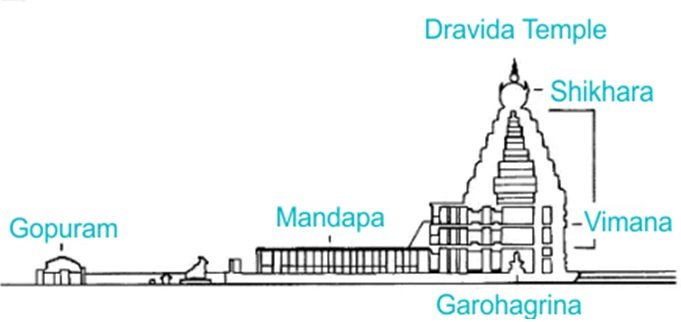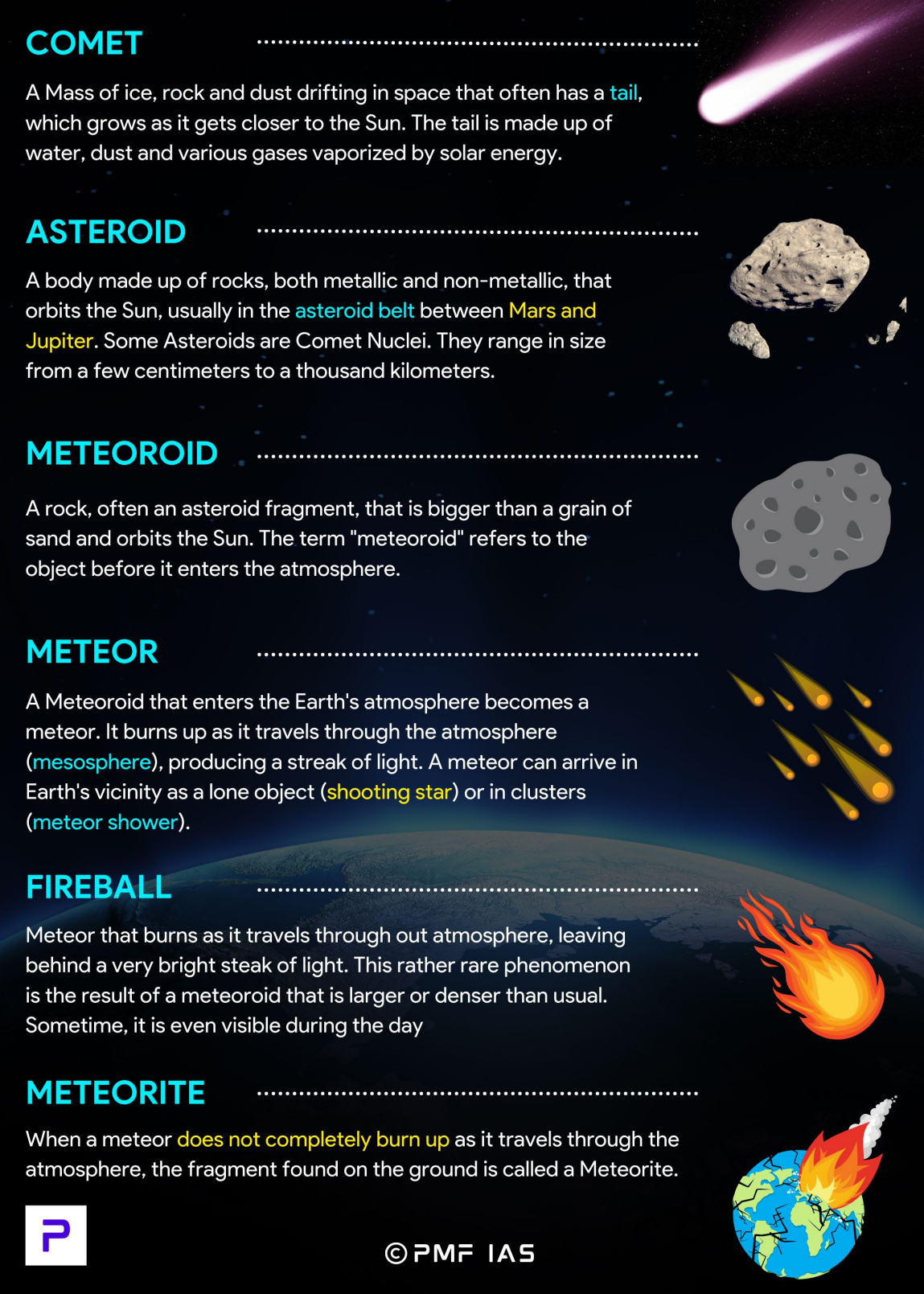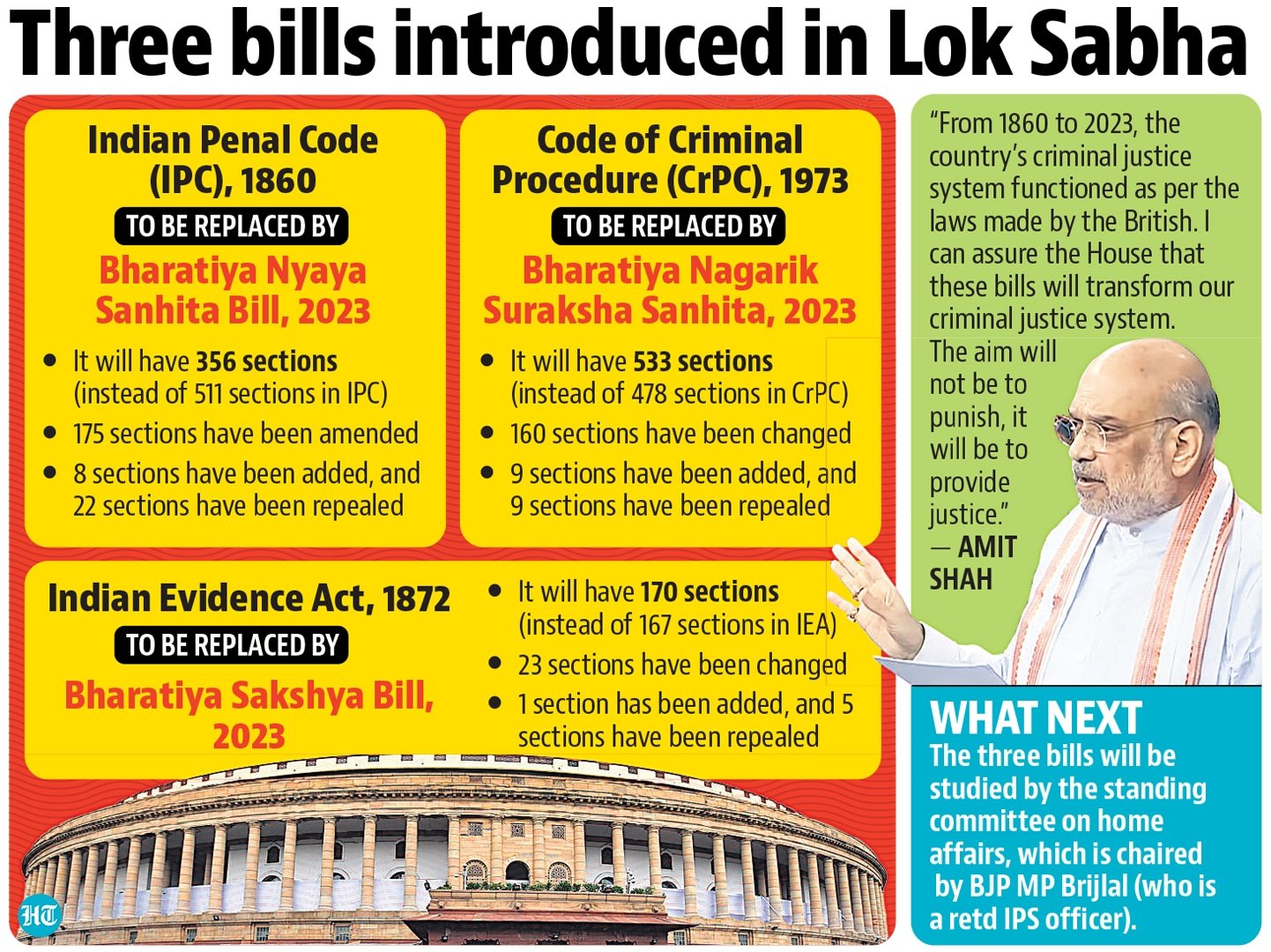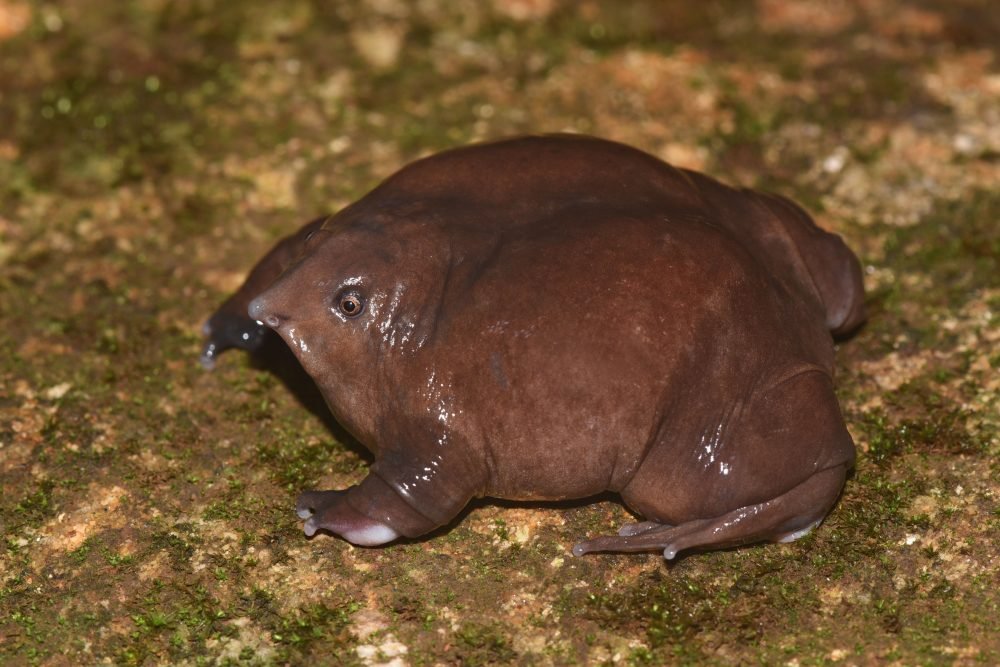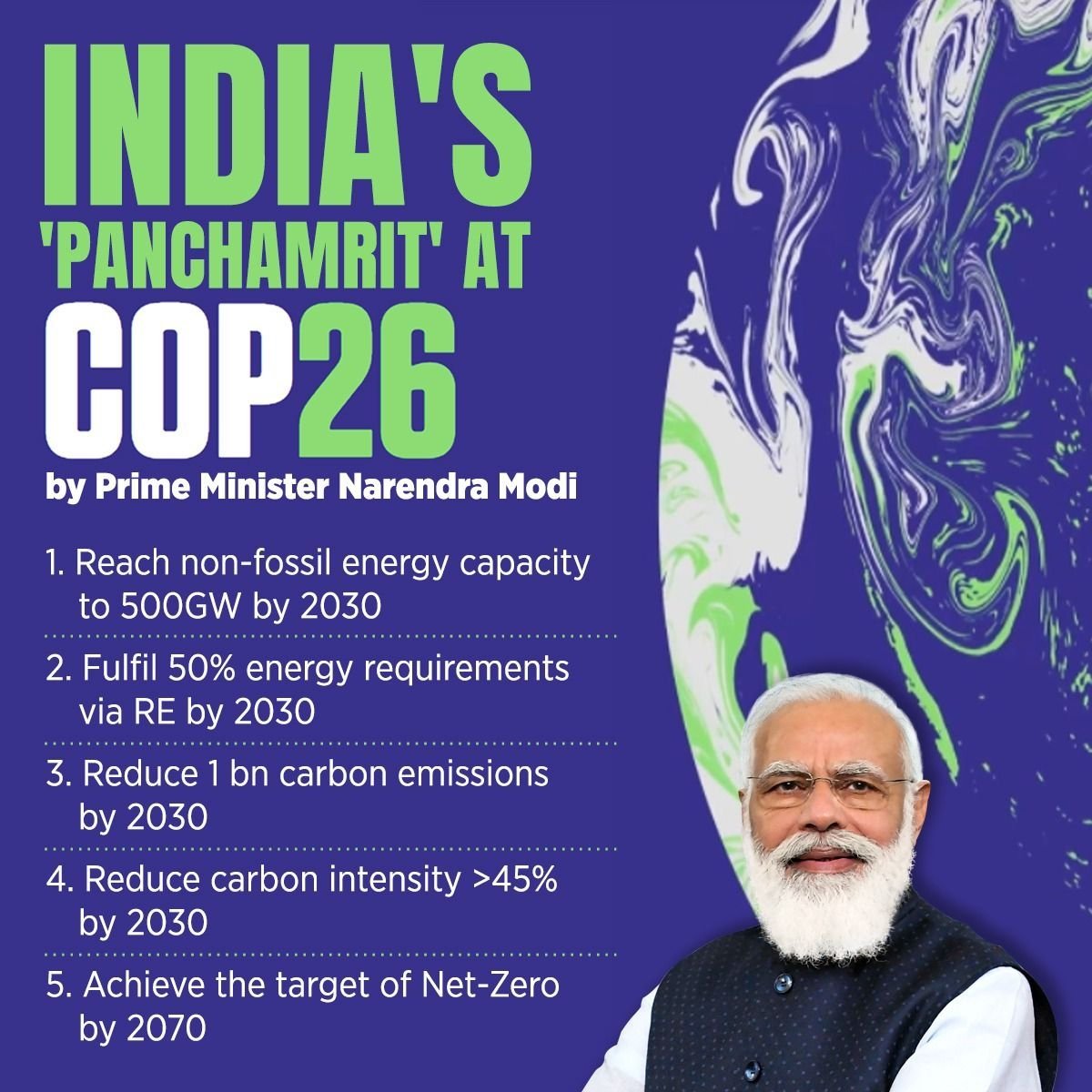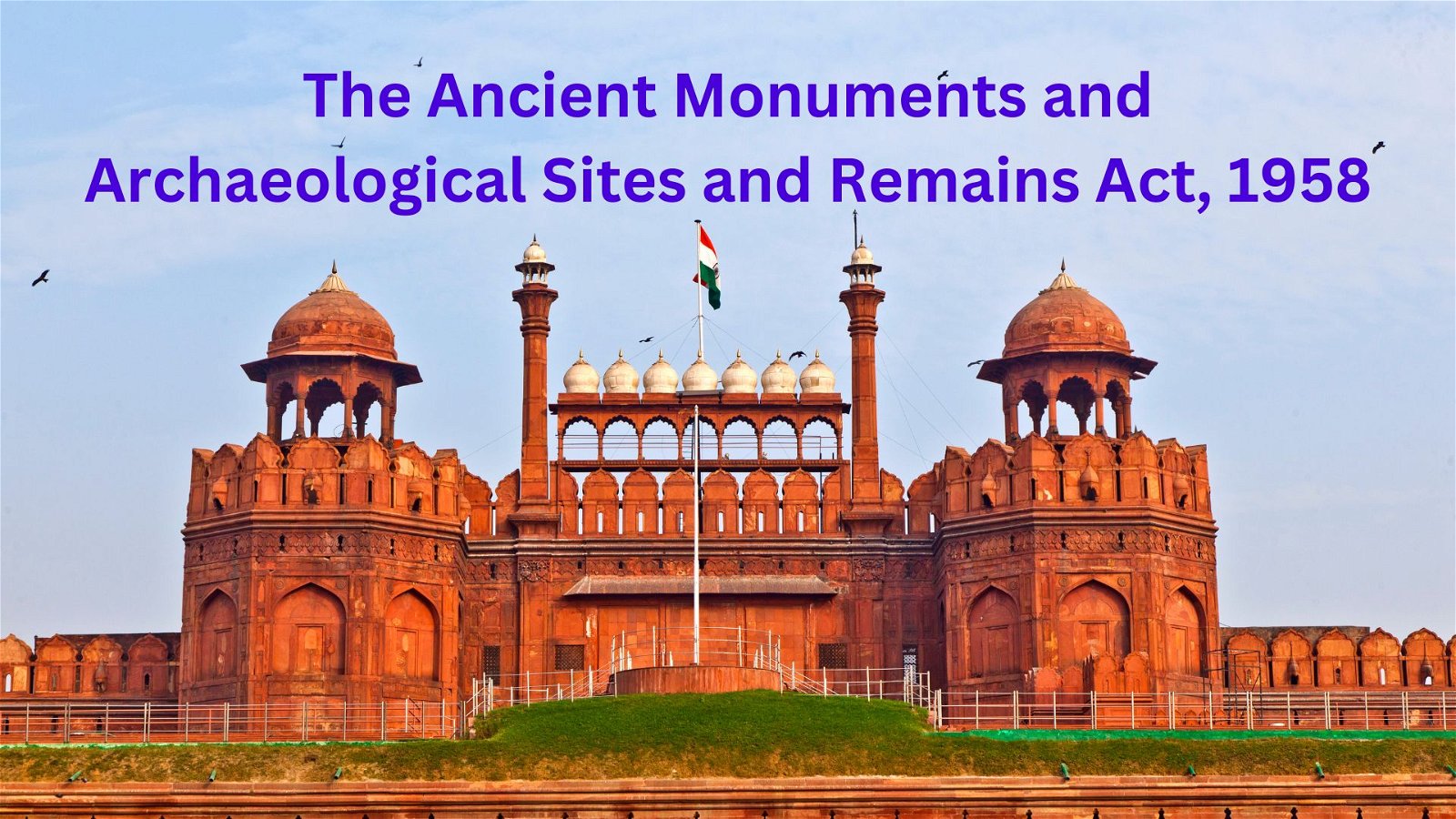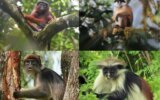
Current Affairs for UPSC Civil Services Exam – April 20, 2024
Subscribers of "Current Affairs" course can Download Daily Current Affairs in PDF/DOC
Subscribe to Never Miss an Important Update! Assured Discounts on New Products!
Must Join PMF IAS Telegram Channel & PMF IAS History Telegram Channel
{GS2 – Social Sector – Health – Initiatives} ‘Longevity India’
- Context (TH): The Indian Institute of Science (IISc) launched the ‘Longevity India‘ Initiative.
- It aims to extend the human health span and address ageing-related challenges.
- The initiative received initial funding from Prashanth Prakash, Founding Partner of Accel India.
- Need: India’s elderly population is projected to surge to 347 million by 2050. There is, thus, a need to leverage technology to provide accessible geriatric healthcare, nurture the silver economy to support ageing populations.
|
{GS3 – IE – Banking} Investment Companies
- Context (IE): SEBI proposes to lay a framework for price discovery of shares of listed investment companies (ICs) and listed investment holding companies (IHCs).
- Currently, shares of some listed ICs or IHCs are traded infrequently at prices significantly lower than their disclosed book value.
- These companies typically have no day-to-day operations and primarily hold investments in various asset classes, including shares of other listed companies.
- A special call-auction mechanism without price band may be enabled for listed ICs and IHCs, whose shares are trading beyond a certain discount to their book value.
- The concept of price bands was implemented as a risk management and surveillance measure to ensure orderly trading, appropriate price discovery, and market integrity.
Book Value
|
Investment Companies (ICs)
- ICs are companies that earn major revenue from interest and capital appreciation from investments. They do not include rental income, which is classified under diversified commercial services.
- Investment companies can be privately or publicly owned, and they engage in the management, sale, and marketing of investment products to the public.
- An investment company can be a corporation, partnership, business trust or limited liability company (LLC) that pools money from investors on a collective basis.
- The money pooled is invested, and the investors share any profits and losses incurred by the company according to each investor’s interest in the company.
Types of Investment Companies
- Mutual funds
- Closed-end funds
- Unit investment trusts
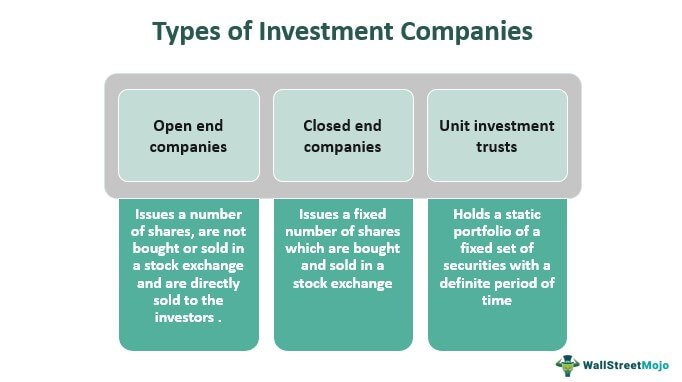
Credits: Wallstreetmojo
Is a Hedge Fund an Investment Company?
- Private investment funds that only accept money from investors with a substantial amount of assets (i.e., accredited investors) are not considered to be investment.
- These funds are exempt from the registration requirements under the Investment Company Act of 1940, but they are still subject to other securities laws and regulations.
Pros of Investment Companies
- Diversification: Investment companies offer investors different investment options to reduce risk. They do it by spreading the investment across different securities.
- Liquidity: These companies provide clients with liquidity, meaning that investors can sell their shares anytime. The ability to provide client liquidity is essential to help manage financial emergencies.
- Professional management: An investment company manages financial resources using strategies that an investor might not know about. Using their experience, these companies ensure investors access a wider range of investment products.
Cons of Investment Companies
- Fees: Investment companies charge a higher fee for their services. This might reduce the overall return on investment.
- Risk: An investment company’s securities might be more volatile than other investments, such as bonds. This primarily means that investors might lose money when the market falls or declines.
Investment Holding Companies (IHCs)
- An IHC is either a public or private group holding entity that acts as a financial investor.
- Its portfolio mainly consists of majority or minority equity stakes in private/publicly traded companies.
- It generates profits from investing in other companies. This includes purchasing, selling, & owning stocks, bonds, mutual funds, real estate investment trusts, options contracts, & other investments.
{GS3 – IE – Industry} Reasons for Increase in Gold Prices
- Context (TH): An econometric study examined factors influencing the international price of gold using over 30 years of historical data.
- The study found a direct relationship between global crude oil prices and the price of gold (positive correlation).
- There was an inverse relationship between the external value of the U.S. dollar and the international price of gold (negative correlation).
Reason
- This is because a rise in oil prices signals potential global inflation, prompting investors to seek gold as a hedge against inflation.
- Unlike financial assets, gold is considered a real asset, so it retains its value during times of inflation.
- Additionally, since the global price of gold is denominated in U.S. dollars, a depreciation of the dollar leads to higher gold prices globally.
- Denomination in U.S. dollars: When gold is priced in U.S. dollars, its value is directly tied to value of the dollar. So, if dollar weakens, it takes more dollars to buy the same amount of gold.
|
Other factors that impact gold prices
- Both supply and demand factors influence gold’s price.
Supply-side Factors
- Production and mining costs affect the supply side of gold. Since most accessible gold has been mined, new production involves costly deep mining.
- Rising prices of crude oil and natural gas contribute to higher gold prices due to the energy-intensive nature of gold mining.
Demand side Factors
- Demand factors are categorised into institutional, investor, consumer, and industrial demand.
Institutional demand
- Demand, particularly from central banks, drives gold prices to record levels. Central banks buy gold to bolster their reserve assets, as it retains value and supports currency issuance.
- E.g. Amid concerns of inflation and geopolitical uncertainty, central banks like China are increasing their gold reserves.
- In the current situation, foreign currency reserves in central banks are considered risky and susceptible to loss of value, prompting the move towards gold.
Investor demand
- Investor demand for gold comes from both individuals and institutions.
- They invest in physical gold or financial products like derivatives and ETFs.
- Investors are primarily concerned with getting a good return on their investment. However, they also seek to diversify risk and ensure safety, especially during uncertain times.
- Geopolitical and economic instability increases demand for gold as a safe investment option.
Consumer demand
- Consumer demand for gold comes from individuals and jewellers.
- China and India are the biggest consumers and importers of gold. It is bought for traditional wealth storage and as ornaments for special occasions. Consumer demand is mostly seasonal.
Industrial demand
- Industrial demand for gold is influenced by its technological uses.
- Gold is favoured by industries for its properties like malleability and conductivity.
{GS3 – IE – Resources} Private Investment in the Indian Economy
- Context (TH): The slow increase in private investment is a significant problem for the Indian economy.
- Private investment is measured by private gross fixed capital formation (% of GDP).
- Private investment has consistently declined since 2011-12.
- Impact: Low private investment can lead to slower economic growth because a larger fixed capital base is needed to boost economic output.
- In 2019, the government reduced corporate taxes from 30% to 22% in hopes of stimulating private investment.
About GFCF
- Gross Fixed Capital Formation (GFCF) measures the growth in fixed capital in an economy.
- Fixed capital includes things like buildings and machinery that require investment to be created.
- GFCF is important because fixed capital helps workers produce more goods and services, leading to economic growth and better living standards.
- Developed economies like the U.S. have more fixed capital per person compared to developing economies like India.
- Private GFCF gives an idea of how much the private sector is investing in the economy.
- It also includes government investment in fixed capital.
Trends in Private Investment in India
- Before economic reforms, private investment hovered around 10% of the GDP. Public investment, however, steadily rose over the decades, surpassing private investment as a percentage of GDP by the early 1980s.
- After the Economic reforms, Private investment in India increased significantly, which boosted confidence in the private sector.
- After liberalisation, private investment took the lead in fixed capital formation, while public investment declined.
- Private investment continued to grow until the global financial crisis of 2007-08, reaching around 27% of GDP.
- Since 2011-12, private investment has been declining, hitting a low of 19.6% of GDP in 2020-21.
Reasons for falling private investment
Low private consumption expenditure
- Economists argue that businesses need strong consumer spending to have confidence in future demand for their products before investing in fixed capital.
- To address this, economists suggest the government should increase people’s disposable income to boost consumption expenditure and stimulate private investment.
Analysis
- However, historically, an increase in private consumption has not necessarily led to higher private investment in India.
- In fact, a drop in consumption spending has sometimes boosted private investment. Since 2011-12, private consumption has risen while private investment has fallen.
Structural problems
- Few Economists point to unfavourable government policies and policy uncertainty as major issues affecting private investment.
- The increase in private investment in the 1990s and 2000s was linked to the economic reforms initiated in 1991.
- Conversely, the decline in private investment correlated with a slowdown in the pace of reforms over the last two decades under both UPA and NDA governments.
- Policy uncertainty can discourage private investment because investors prefer stability to undertake risky long-term projects.
Can Public Investment lead the way?
- Some see the government’s push to increase government investment as negative because it may crowd out private investment. However, others believe that government investment offsets the lack of private investment.
- Private investors are considered better allocators of capital than public officials, which helps prevent wasteful spending.
- Taxes imposed to raise money for public spending can also weigh heavily on the economy.
|
{Prelims – Envi – Species} Fossils of Longest Snake Discovered: Vasuki indicus
- Context (DTE): Paleontologists in India have unearthed relic of a giant predator snake estimated to be as large as the longest snake ever discovered.
- The fossilised remains, measuring 10-15 metres long, were found in Gujarat’s Panandhro Lignite Mine in Kutch and date back a staggering 47 million years.
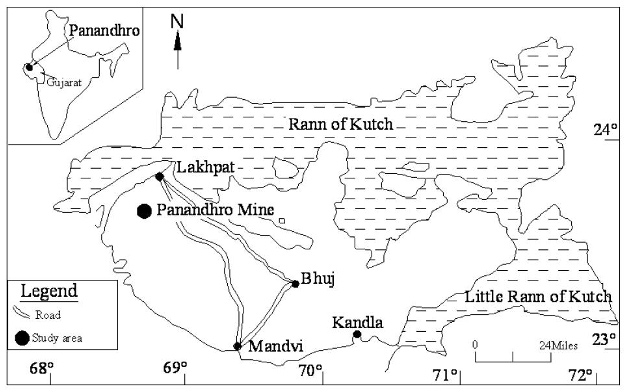
- The new species, named Vasuki indicus after the mythical serpent associated with Lord Shiva, belonged to the now-extinct Madtsoiidae snake family. It lived in the warm Middle Eocene period (roughly 47 million years ago) in India.
- Madtsoiidae are Gondwanan terrestrial snakes that lived between Upper Cretaceous (100.5 million-66 million years ago) and Late Pleistocene (0.126 million years ago-0.012 million years ago).
- Fossils of Madtsoiidae snakes from the Late Oligocene (about 33.7-23.8 million years ago) have previously been found in 2022 in the Ladakh Himalaya.
- The giant madtsoiid snake identified in the new study is one of the largest snakes ever reported.
- Vasuki indicus reached lengths between 10.9 and 15.2 metres. This surpassed the size of even the largest modern snakes like the reticulated python of southeast Asia, Indonesia and the Philippines, which regularly exceeds 6.25 metres.
- The organism lived at a time when temperatures were relatively warm, at roughly 28 °C.
- The species represents a lineage of large madtsoiids that likely originated in the Indian subcontinent before subsequently moving to Africa through southern Eurasia during the Eocene.
|
{Prelims – In News} Javathu Pulavar
- Context (TH): A Murugan temple at Melakodumalur in TN includes a statue of a Muslim poet among Hindu deities adorning the Vimana over the sanctum sanctorum.
- Kumarapathigam, which Javathu Pulavar wrote in praise of Lord Muruga of the temple, has been inscribed on granite bars fixed on the temple walls.
- The poet is symbolically represented by a statue of a Muslim wearing a cap and dhoti.
- Javathu, as the name suggests, is not a perfume; it means Perumkodai Vallal (a great philanthropist) and one of the titles of the Prophet.
- He penned 11 verses in the praise of Lord Muruga at Melakodumalur.
- The verses are said to have granted santhana pakkiam (child) to priest, and his family tree is still growing after 450 years.
Vimana in Dravidian Temple Architecture
|
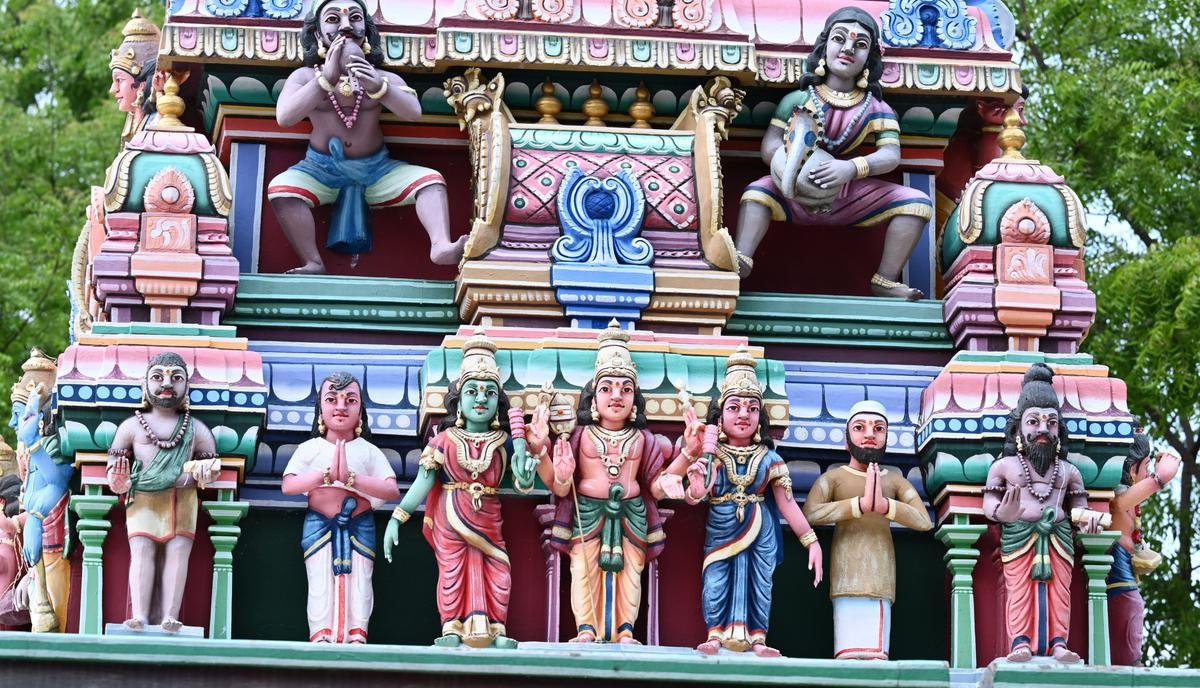
{Prelims – In News} Madiga and Mala Community
- Context (TH): The rivalry between the Malas and Madigas, sub-castes among the Scheduled Castes (SCs) in Telangana, has once again come to the fore in the wake of general elections.
- The Madiga community in Telangana highlights the issue of dominant communities within Scheduled Castes (SCs) monopolising benefits meant for all SCs.
- The Madiga community claimed that they were being overshadowed by the Mala community, another SC community considered dominant and relatively forward.
- The issue of sub-categorization within the Scheduled Castes (SCs) has gained attention due to the perceived dominance of specific communities over others within this category.
Madiga Community & Mala Community
- Despite its size, the Madiga community, constituting over 50% of the SC population in Telangana, feels disadvantaged in accessing reservation benefits.
- This perception stems from the dominance of the Mala community within the SC category, which leads to an unequal distribution of resources and opportunities.
- Madigas are historically associated with tannery, leatherwork, and small handicrafts. Today, most are agricultural labourers.
Mala Community
- Malas constitute 28.11% of the SCs in the State of Telangana. They are also present in smaller numbers in the states of Karnataka and Maharashtra.
- The Government of India considers them to be Scheduled Caste (SC) or OBC, depending on their religious status.
- The descendants of Kannama Dasu were known as Mala Dasulus and were appointed as head priests of the Chennakesava Swamy Temples.
- Malas are traditional silk weavers as well.
- In the 19th century, many Malas, especially in coastal Andhra, converted to Lutheranism after the arrival of Christian missionaries.
{Prelims – In News} Rio Grande River
- Context (DTE): Once Mighty, Rio Grande is America’s ‘most endangered river’.
- The Rio Grande River originates in south-central Colorado, in the USA, and flows to the Gulf of Mexico.
- The River extends approximately 1,990 miles and is considered the 5th longest river in North America and the 20th longest river in the world.
- It provides fresh water for seven United States and Mexican states and forms the border between Texas and Mexico, where it is known as the Río Bravo del Norte.
- In South Texas, it serves as the meeting point for the Central and Mississippi flyways, making it one of the most important bird migration routes in North America for hundreds of species of birds.
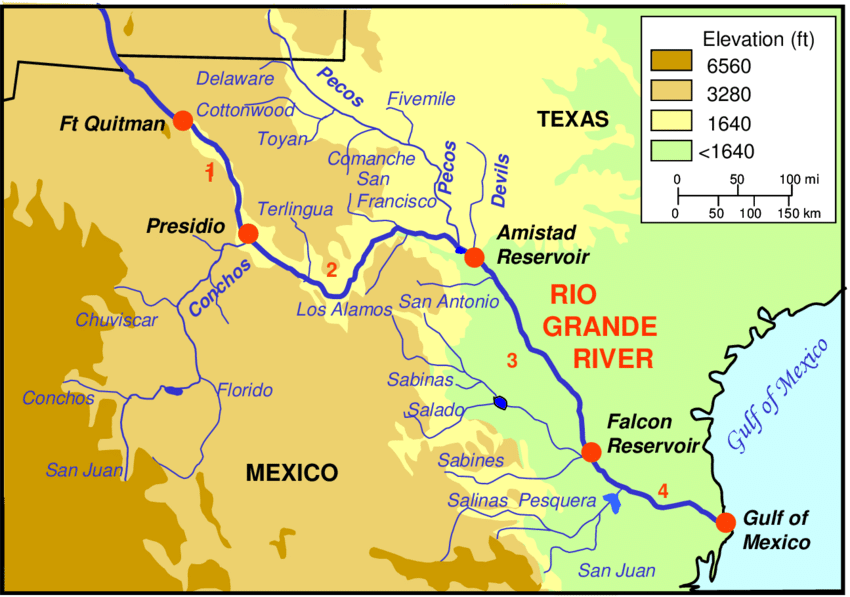
{Prelims – In News} Shompen Tribe
- Context (TH): Great Nicobar’s particularly vulnerable tribal group, Shompen, cast their vote for 1st time.
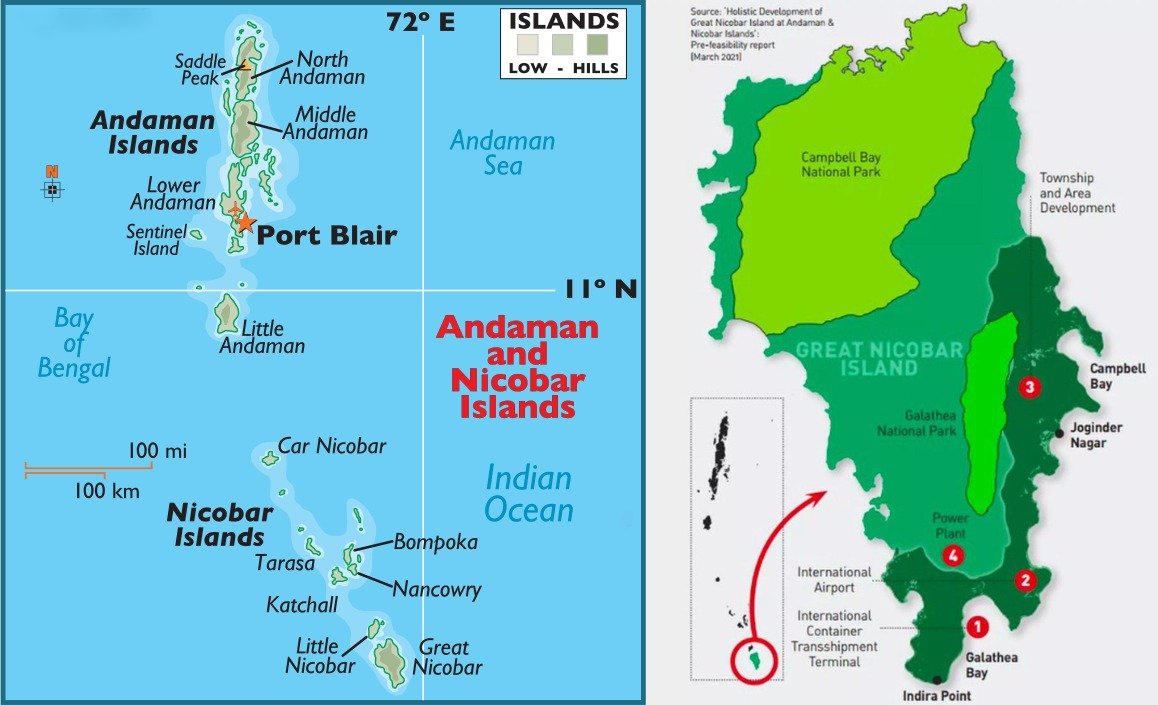
- Shompens are indigenous inhabitants of Great Nicobar Island in India, and most of them are uncontacted, refusing all interactions with outsiders.
- They are one of the most isolated tribes on Earth. They are one of the least studied Particularly Vulnerable Tribal Groups (PVTGs) in India.
- The Shompen are nomadic hunter-gatherers. They live in small groups, whose territories are identified by the rivers that criss-cross the rainforest.
- They are of short to medium stature, have a round or nearly broad head shape, narrow nose, a broad facial profile, and distinctly exhibit Mongoloid features such as light brown to yellow brown skin and oblique eye features.
- As per the 2011 census the population of the Shompen was 229.
{Prelims – S&T – Defence} Hwasal-1 Ra-3 | Pyoljji-1-2
- Context (LM | TOI): North Korea tests ‘super-large’ cruise missile warhead, Hwasal-1 Ra-3, new anti-aircraft missile Pyoljji-1-2.
- Unlike their ballistic counterparts, the testing of cruise missiles is not banned under current UN sanctions on North Korea.
{Prelims – S&T – Defence} Indigenous Technology Cruise Missile (ITCM)
- Context (TH| PIB): The DRDO tested the Indigenous Technology Cruise Missile (ITCM) at Chandipur in Odisha.
- The missile followed the desired path using waypoint navigation and demonstrated very low-altitude sea-skimming flight.
- A waypoint is a specified geographical location used to define an area navigation route or the flight path of an aircraft employing area navigation.
- The specific details or features of the missile were not provided. However, it resembled the Nirbhay subsonic cruise missile that had been tested before.
Indigenous Technology Cruise Missile
- It has a strike range of 1,000 km.
- It will be part of the Integrated Rocket Force with BrahMos and Pralay missiles for conventional strike capabilities.
- It is powered by the indigenous Manik turbofan engine instead of the earlier Russian one.
- Need: Recent conflicts, such as the Russia-Ukraine war and the Ladakh standoff with China, have shown the need for long-range precision strike abilities.
- The missile was developed by DRDO’s Aeronautical Development Establishment (ADE) in Bengaluru.
- The successful test proved the reliability of the indigenous propulsion system that was developed.
About Integrated Rocket Force (IRF)
- The IRF will include both conventional cruise and ballistic missiles.
- It will be separate from the Strategic Forces Command (SFC), which manages India’s nuclear weapons, established in 2003.
-
Ballistic vs Cruise missiles
- Ballistic missiles, like the Agni missiles, follow a parabolic trajectory, leaving and re-entering the earth’s atmosphere before hitting their targets.
- Cruise missiles, on the other hand, fly at low altitudes, close to the ground, to avoid detection by enemy radars and missile defence systems.
To know more about India’s missile system, Visit > India’s missile system
{Prelims – Sci – Bio – Diseases} Meningitis
- Context (DTE): Nigeria becomes the first country in the world to introduce a new, highly effective vaccine, Men5CV, against meningitis.
- The vaccine offers protection against five strains of the meningococcus bacteria in a single shot.
- Bacterial meningitis, caused by the meningococcus bacteria, is a particular concern in Africa. A region of 26 countries known as the “African meningitis belt” stretches across the continent, including Nigeria.
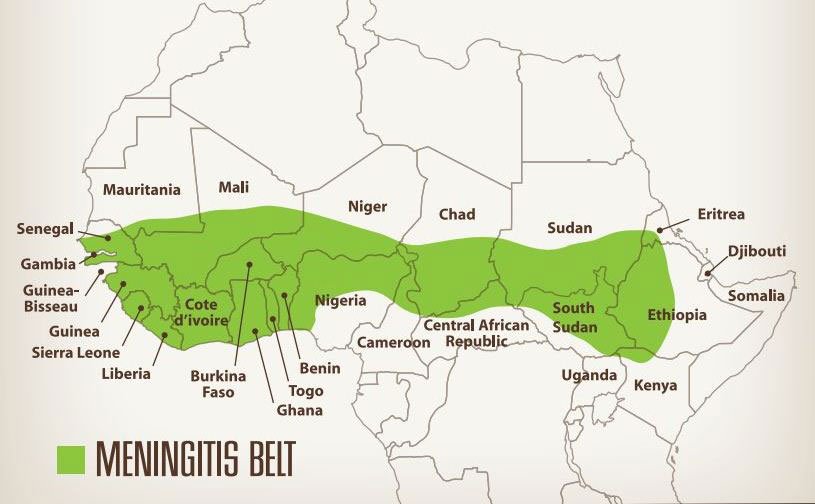
- Meningitis is a dangerous inflammation of the membranes surrounding the brain and spinal cord (Meninges).
- Meninges protect the brain and spinal cord from injury and provide support and structure.
- It can be caused by viruses, bacteria, fungi, or parasites.
- Transmission: The disease is transmitted from person to person through droplets of respiratory or throat secretions from carriers.
- Close and prolonged contact or living in close quarters with an infected person facilitates the spread of the disease.
- Symptoms: Fever, severe headache, neck stiffness, nausea, vomiting and light sensitivity.
- WHO targets to eliminate Meningitis by 2030.
- Vaccinations can prevent or minimize the incidence of meningitis.
|





![PMF IAS Environment for UPSC 2022-23 [paperback] PMF IAS [Nov 30, 2021]…](https://pmfias.b-cdn.net/wp-content/uploads/2024/04/pmfiasenvironmentforupsc2022-23paperbackpmfiasnov302021.jpg)
